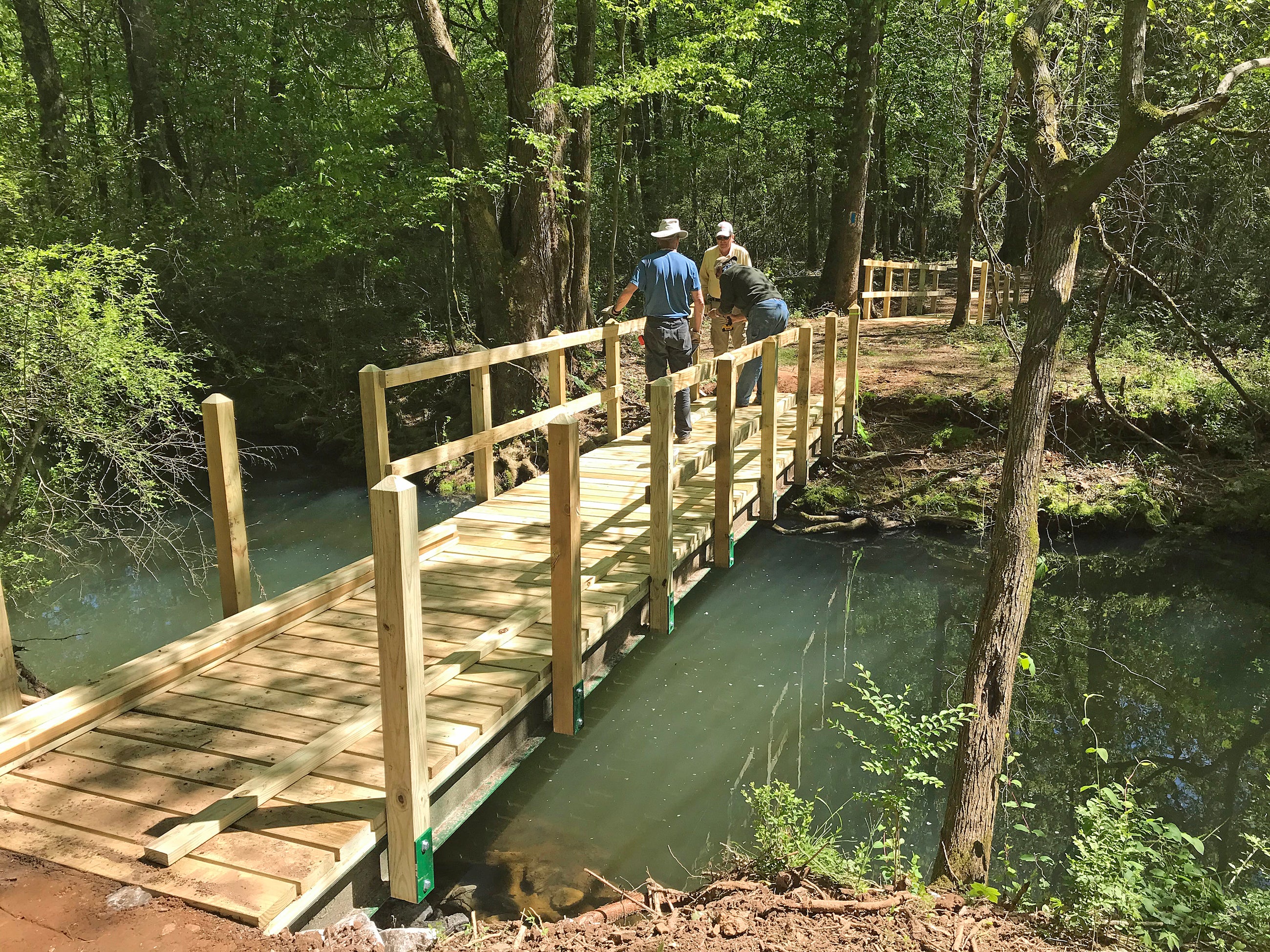By DAVID RAINER, Alabama Department of Conservation and Natural Resources
Those who love to explore nature have another opportunity with the opening of the new trail at Joe Wheeler State Park in northwest Alabama. The name of the new 8-mile pathway is the Awesome Trail, literally.
Ken Thomas, Alabama State Parks Trails Coordinator, said naming the trail resulted from a conversation he had with Chad Davis, State Parks’ Northwest District Supervisor.
“I told Chad this trail is going to be awesome,” Thomas said, “and it stuck.”
Thomas said the Awesome Trail was constructed through a Recreational Trails Program (RTP) grant with accessibility for a variety of users in mind.
“We tried to create a trail that could be used by walkers, hikers, mountain bikers and trail runners,” Thomas said. “The biggest consideration for making it compatible for everybody is that it had to be wide enough to support all of those folks. These type trails are wider than most trails people are used to. This allows people to walk side by side, and it has enough room that a biker or jogger could still pass.”
Before he became the trails coordinator, Thomas spent most of his time as superintendent at DeSoto State Park, which has some of the most beautiful mountain scenery in the state as well as numerous elevation changes. He didn’t expect what he found when he went to Joe Wheeler to establish the new trail.
“The terrain was very surprising,” he said. “It’s a whole lot steeper than people realize. Joe Wheeler had minimal trails. When I started tracking it and figuring out where we were going to put the trail, we ran across several challenges. The terrain going into the Tennessee River and First Creek is a lot steeper than we realized. We had to do a lot of bench cutting, kind of carve the trail out of the terrain to create a level trail bed.
“We dealt with some wet areas where we had to pick the best route to maintain the environment. We also found a tremendous number of ravines.”
Thomas said sometimes the water flow in those ravines is seasonal and can be easily forded. Some of the other ravines had hard bottoms or could be manipulated to have hard bottoms, while other ravines were as deep as 8 feet and couldn’t be forded.
“We wound up installing 16 bridges,” he said. “Seven of the bridges were 20 feet long and two were 30-foot bridges. That was a challenge. We were only able to keep three fords and still keep the environmental integrity of the stream.”
The trail at Joe Wheeler was finished in the middle of April after months of having to deal with the heavy rainfall that kept most of central and north Alabama waterlogged. The new Awesome Trail has received rave reviews since it opened.
“Rain was my biggest problem,” Thomas said. “When the ground is so wet, you’re doing more damage than good.”
Despite the obstacles, Thomas is pleased with the outcome.
“I think what makes this trail so special is that we went to great lengths to bring people to some of the most beautiful parts of the park that we could find,” he said. “Because of the terrain, I had to put in quite a few switchbacks. A lot of consideration went into this trail that I don’t think people realize. You can turn a hiker 90 degrees, but you can’t turn a mountain biker 90 degrees. There are elevation changes you have to consider for all these diverse user groups.
“You don’t just get your hatchet and start hacking out a trail. It’s purpose-built. The combination of all of the users we wanted to serve with this trail made it challenging to build a trail system that a beginner would use but an advanced person would be attracted to also. A happy medium is what we were looking for, and I think we achieved a trail that will make the beginner and more advanced people happy. Nothing about this project was impossible, but a tremendous amount of thought went into it.”
Thomas said the actual construction of trails has advanced dramatically in the past decade. In fact, he was able to become the first trail builder in the state to receive his HETAP (Highly Efficient Trail Assessment Process) certification.








